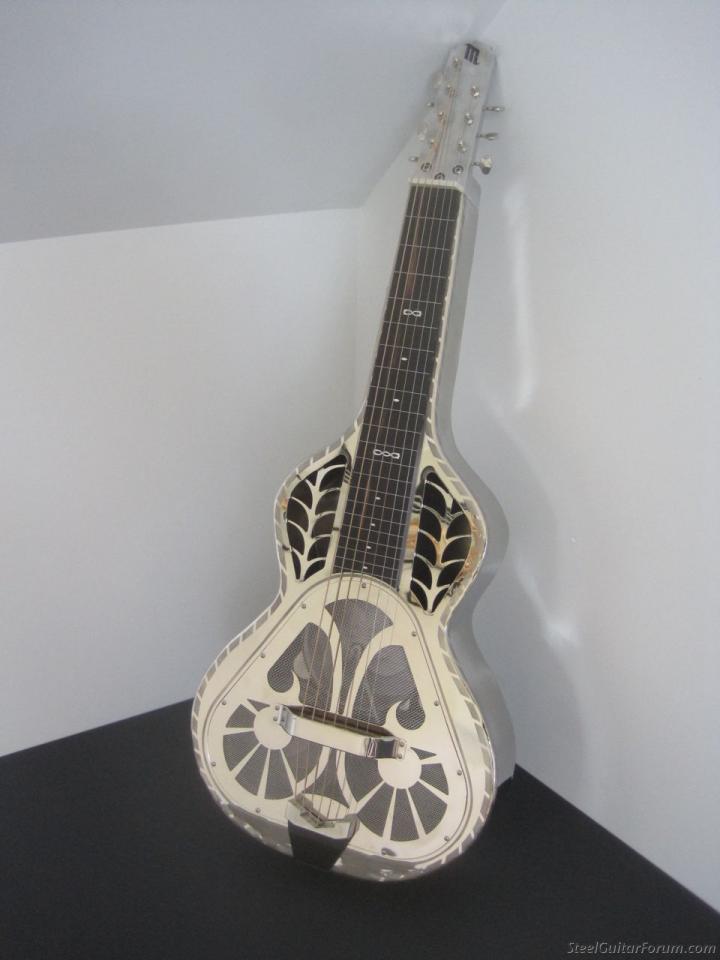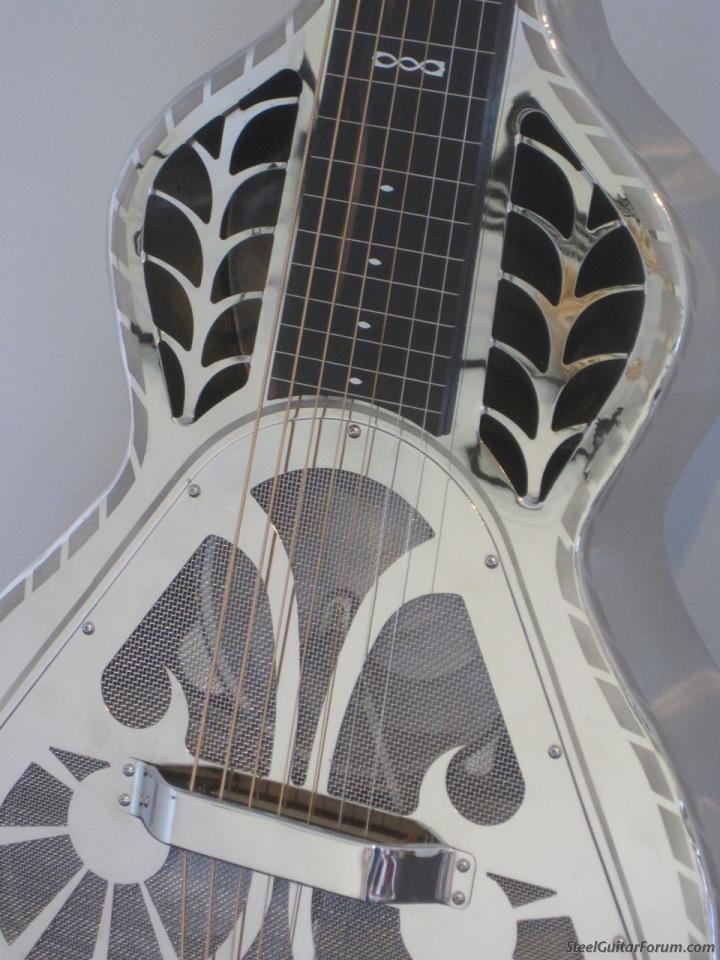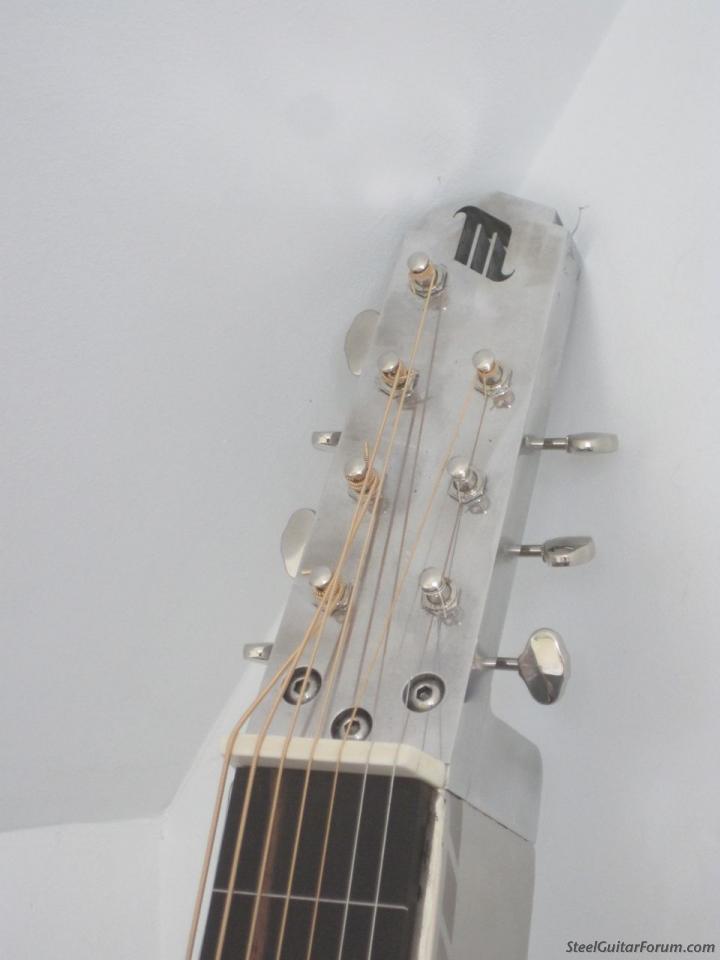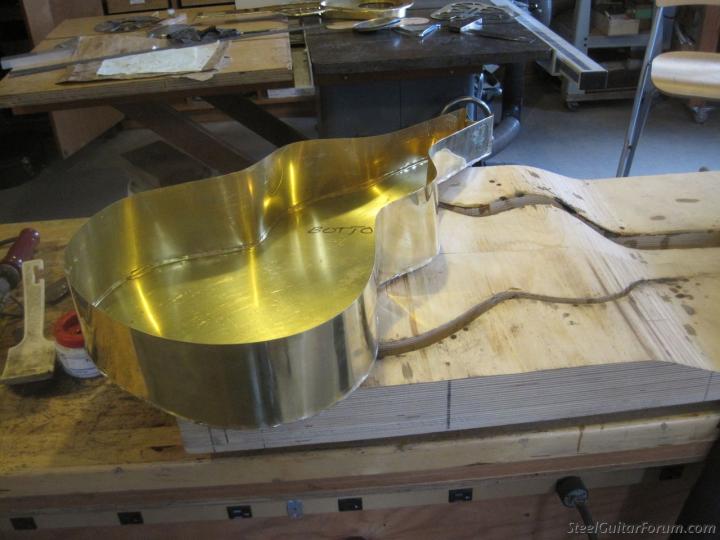Thanks for all the kind words.
The Portland event is the Northwest Handmade Instrument Show at Marylhurst College.
http://www.nwmusicalinstrumentshow.org/
I used to snip everything, but now it's a CNC milling machine for the geometrically precise bits.
Here are some more shots from the process:
layout for top and back
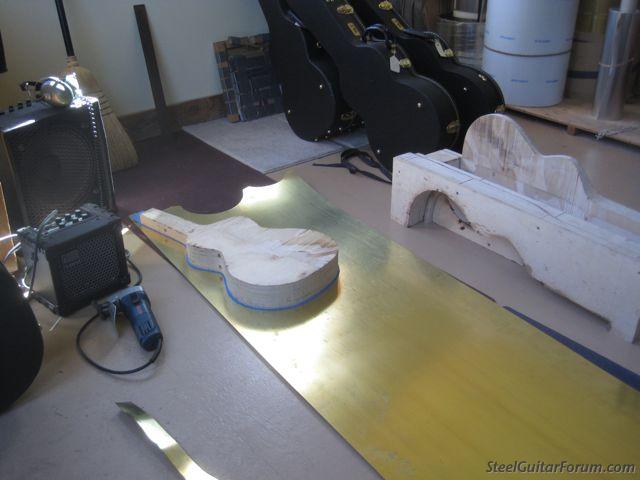
top blank on the mill table
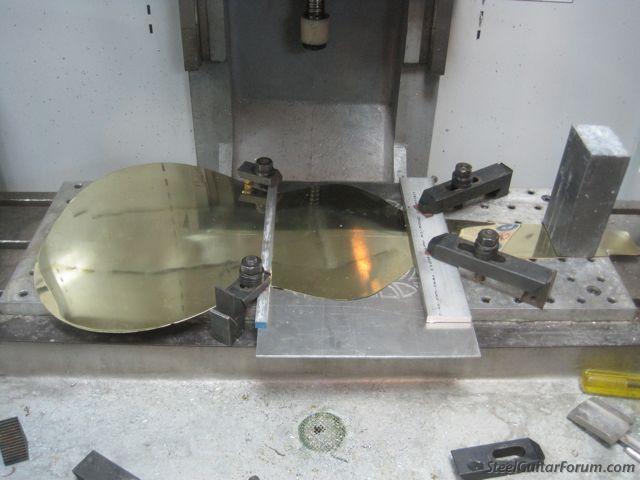
grill patterns have been cut
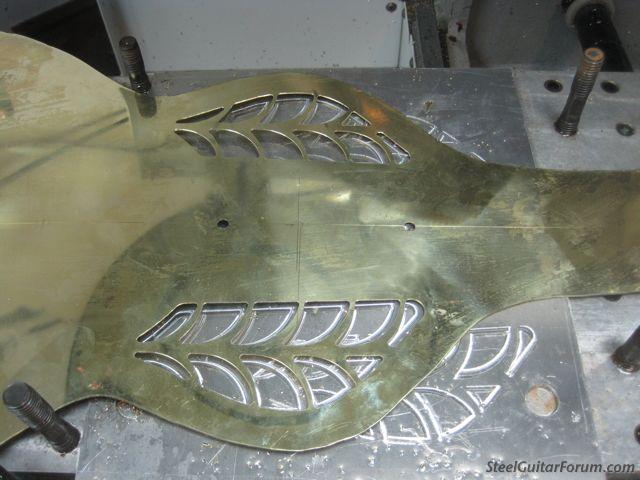
a test of the die that recesses the grill
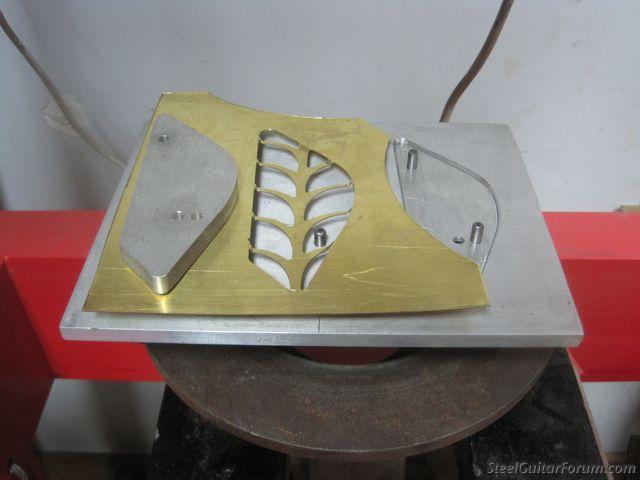
tray rim ready for assembly
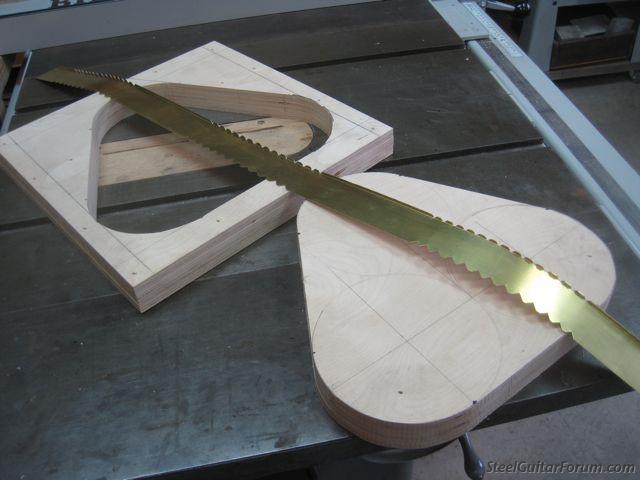
tray pieces w/ assembly form

I use a block mold, a rectangular block which is cut to the body shape in plan and elevation. There is a guitar-shaped piece in the center, and the various other pieces aid in clamping parts of the assembly as they are soldered. Everything goes back together like a 3D puzzle. (Mike D, my upper blade guide goes up to 12", that's enough to cut one side.)
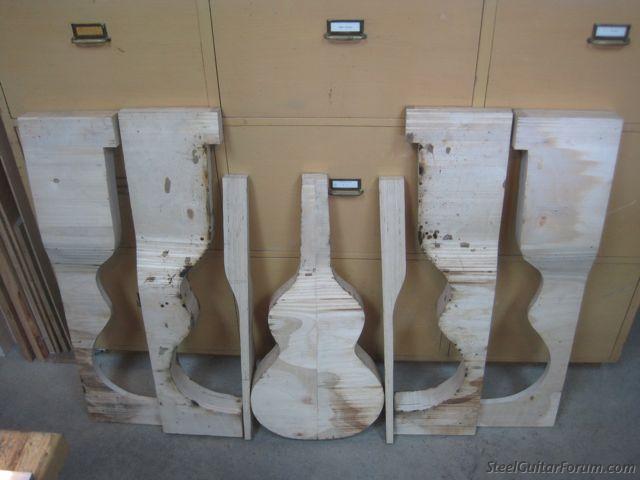
the cone blank is cut from flat alum. sheet
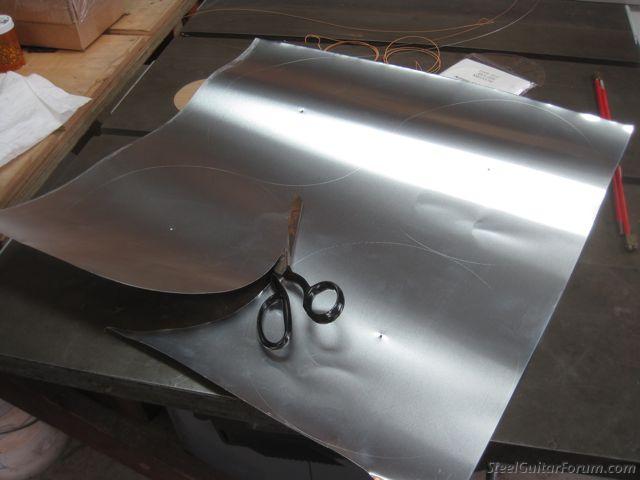
the cone is spun over an aluminum form

after spinning
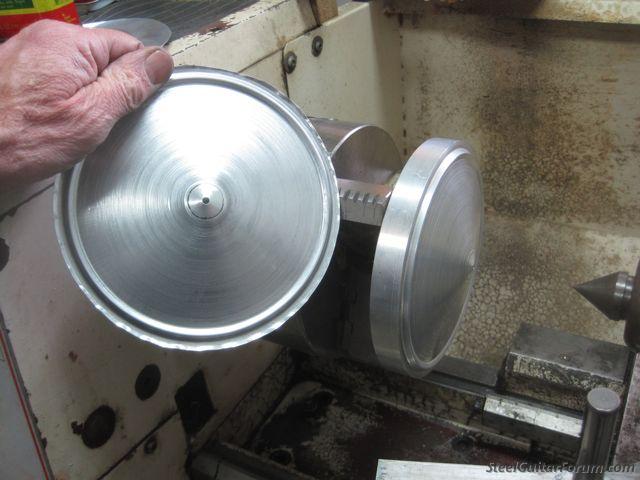
the spiral grooves are done freehand

